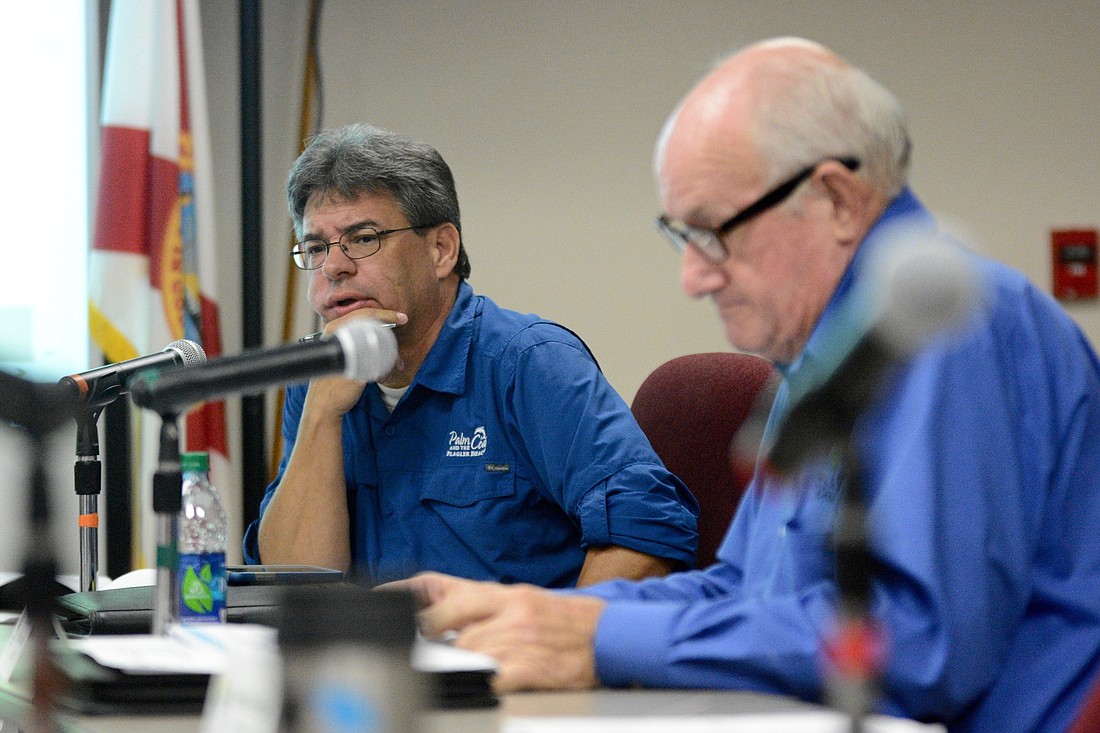- December 13, 2025

With the County Commission missing one member during its July 9 budget workshop — Commissioner Charlie Ericksen was absent — the remaining four were unable to come to a consensus on a tax rate. But they did decide that they won't exceed a 20 cent increase, and they proposed potential places to cut — by reducing county contributions for employees' health insurance reserves, and by spreading IT upgrades out over three fiscal years instead of the currently planned two fiscal years.
The county is facing increasing costs from staff cost of living increases and raises, a planned emergency radio system upgrade, information technology upgrades and costs from various consitutional offices, including the Sheriff's Office and the Supervisor of Elections Office.
"Any way you go, you're raising taxes," County Administrator Craig Coffey said. "You're better off picking the amount of money you need to do what you need to do and then work backwards on millage."
The commissioners have asked county staff to provide more details on the impact of adjusting health insurance contributions or the scheduling of IT upgrades during a future meeting July 23, when County Administrator Craig Coffey will present commissioners with a budget based on a millage of 8.3167 as well as options for getting it down to 8.1367. The current millage is 8.1167.
Meanwhile, the county will pass a truth-in-millage rate, or TRIM rate, July 16 declaring that the county's maximum millage increase would be 20 cents per $1,000 of taxable value, for a total millage of 8.3167. That rate will be sent out to taxpayers in TRIM notices, and, once those go out, the county by law cannot exceed the published TRIM rate.
The lower number under consideration, 8.1367, is preferred by Commissioners Greg Hansen and Donald O'Brien. During a budget meeting last week, they'd favored no millage rate increase at all. But the .02 increase that would bring the millage to 8.1367 would fund additional Sheriff's Office deputies to protect the schools in accordance with legislation passed after the shooting in Parkland, and both Hansen and O'Brien were willing to support that increase for that purpose.
Commissioner Donald Sullivan said he would support an increase of up to 20 cents per $1,000 of taxable value — an increase of $20 on a taxable value of $100,000, not accounting for property value increase. That's closer to the number favored by Coffey, who'd proposed a 22 cent increase.
Commissioner Nate McLaughlin didn't declare a firm number but warned against cutting too many services in order to keep the millage rate flat.
"You've got this natural inclination as an American to pay as few taxes as humanly possible, but balance that against this board’s responsibility to provide services to the community," he said. "It’s a tough balance every year."
He added that the county is likely to start with a budget hole the following year of $3.5 million to $4 million because taxpayers are expected to approve a constitutional amendment in the coming election that would expand the homestead exemption from $50,000 to $75,000.
Sullivan noted that even if the millage rate remains flat at 8.1167, that would technically be a tax increase: Taxpayers would pay more — and the county would bring in more — because of increased property values. The rollback rate — the rate that would bring in the same dollar amount as last year — would be 7.7084.
O'Brien came to the July 9 workshop with two proposals for potential areas to cut or reduce: A $2 million software upgrade, which the county has planned to spread over two years, with $900,000 budgeted for this coming year; and the money set aside for county employee health insurance reserves.
For the health insurance reserves — the county's insurance is self-funded — the county currently collects $10,500 to set aside for each employee. O'Brien asked about cutting that back to $10,250.
That would save about $180,000, Coffey said. But the county, Coffey says, currently has only $2.9 million in its health reserves. If it falls too low — and the threshold number, based on actuarial data, won't be released until after the budget has to be finalized — it risks losing its self-insurance status, which will be difficult to regain.
For the software upgrade, O'Brien mentioned that it seems to have moved slowly and questioned whether it would actually move forward this coming year. If not, he suggested, perhaps the county could delay the funding a year or spread it out over two fiscal years. The county had planned to fund part of it in the current fiscal year and part in the coming fiscal year.
Cutting from $10,500 to $10,250 on the heath insurance and cutting back on the software upgrade by spreading it out through an additional year could save about $630,000, according to commissioners' calculations.